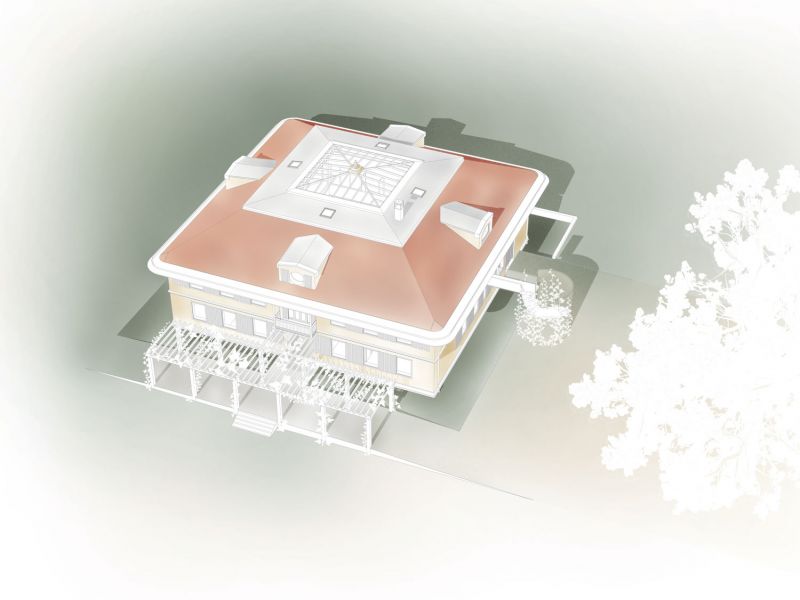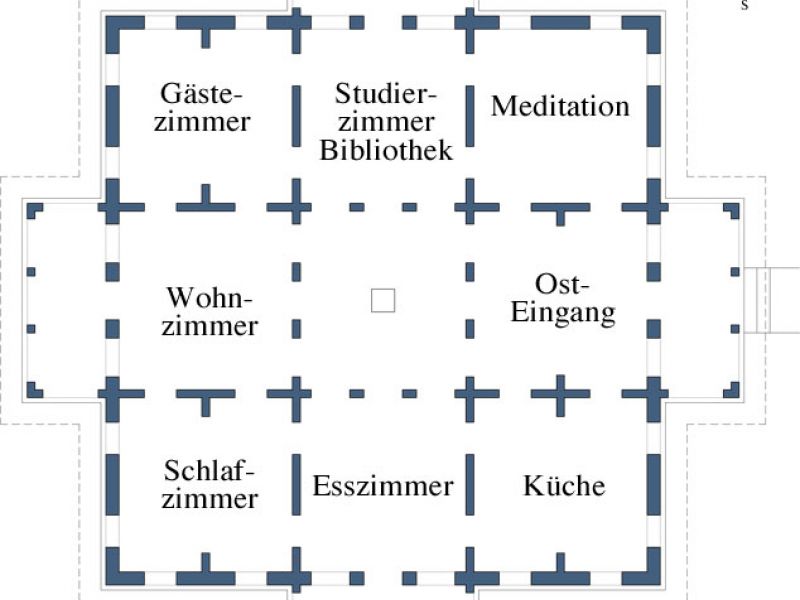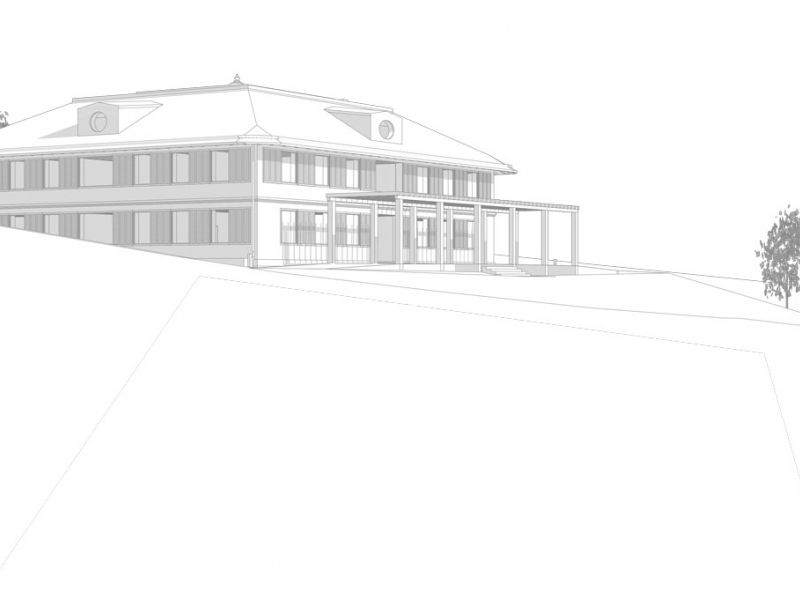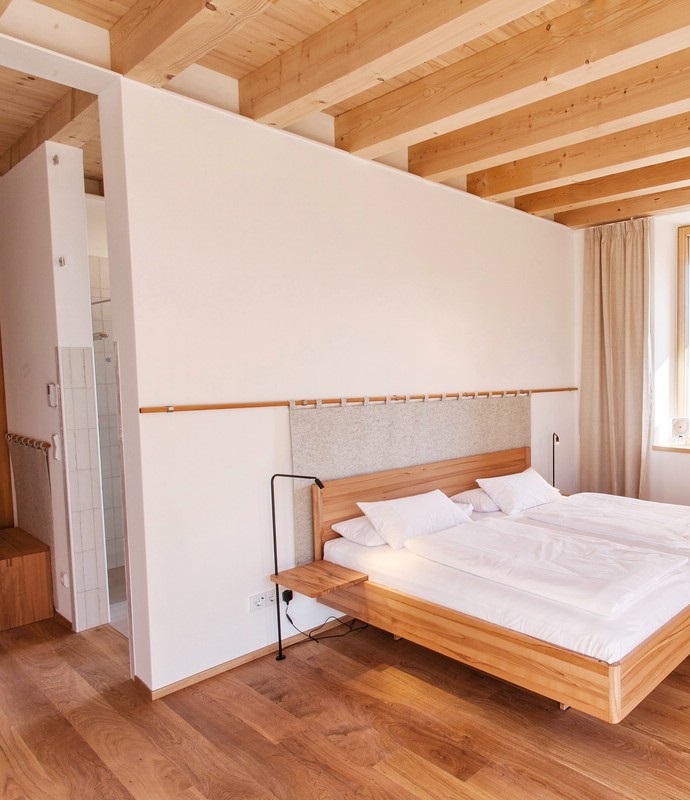Healthy Living and Working with Maharishi Sthapatya Veda
Vedic Building Biology: Vastu-Vidya
Have you had the experience of entering a building and feeling at ease or becoming calm inside? This can be the house of a friendly family, a sacred building like a church or a temple, a simple house or even a palatial building like a castle.
What makes the effect of a building on us? Is it the materials, the colors, the shapes, the orientation, or the layout of the space? We often cannot judge it.
The ancient art of building
While modern building biology assumes that mainly the materials are responsible for the indoor climate of a house, the ancient Vedic architecture "vastu vidya" or "Sthapatya Veda" says that of all the factors mentioned above, it is mainly structural elements such as proportions and room layout that play a role. Vedic architecture systematically studied all these influences and combined them into a great whole. Unfortunately, only a few principles of this ancient science are in use today.
Maharishi Mahesh Yogi (1917-2008) has meticulously revived various branches of Vedic knowledge and made them accessible to our modern society. These include Transcendental Meditation as well as Maharishi Ayurveda and Maharishi Sthapatya Veda.
Maharishi Sthapatya Veda
Maharishi said about 20 years ago, "If your house does not conform to the laws of Vedic architecture, leave it as quickly as if it were on fire!" That sounds very drastic. The buildings in which we work and live have a strong influence on our health, and on our economic and social well-being.
Maharishi Sthapatya Veda is primarily concerned with the construction of new buildings for families, companies, and institutions. This begins with the selection of a suitable site, continues with the design of a building that incorporates unique structural elements, and ends with the implementation, using only biologically compatible building materials.
Residents of such houses are thrilled with the comprehensive effect of these outer shells. "Since I have been living in my Maharishi Vastu House, every day feels like a Sunday," says Mr. Andrej M. "I am much more relaxed, and my sleep and meditation are much deeper. Before I always felt strong pressure, now many things are automatic. Our children are much stronger and more confident now, they experience more recognition in school. One son had asthma and is now healthy. All these things are going very positively as long as I keep the laws of life. I feel very quickly when I deviate from that-there is suddenly a lack of nature support, which I now experience on an ongoing basis."
Emergence of a Maharishi Vastu Building
Anyone planning to build a new house should seek advice from experts in Maharishi Sthapatya Veda as early as the property search stage. This is because the very shape, location, and surroundings of the land are crucial in determining whether it is suitable for Maharishi Vastu. After choosing the land, the client, local architect, and Maharishi Sthapatya Veda expert work out the space program and other requirements of the building. Based on this information, the local architect first prepares sketches, which are increasingly refined and adapted to the many requirements of Vedic architecture in collaboration with the Vedic architects. In the process, the style of the house can and should be adapted to the local architectural tradition.
Important criteria for Maharishi Vedic architecture
Some requirements are essential: the building must be oriented according to the cardinal directions, have an east or north entrance, and the rooms should be grouped around the center of the house, called the Brahmasthan. Symmetry and order are important design elements.
4 Principles of Maharishi Vasut
- Correct orientation: the orientation of the land and the building exactly according to the cardinal directions
- Correct layout of space: as the sun moves across the sky, the qualities of its energy change. Houses are designed so that the different activities (eating, sleeping, working, etc) correspond with the appropriate quality of the sun.
- Proper Proportions: Proportion is a key to successful design in nature. The relationship of the sun, moon, planets and stars are related through mathematical formulas to ensure optimal resonance between cosmic structures and the house.
- Natural and healthy materials: an important component of Maharishi Sthapatya Veda is to build with sustainable, natural, and non-toxic materials.
Vastu correction of inhabited buildings
As desirable as it is to build a vastu building: It is not possible for everyone. In such a situation, there is an opportunity to correct an existing building energetically.
A typical incident: "Since we moved into our apartment, the whole family has been constantly sick. The children have one infection after another, my wife is exhausted and I also feel tired all the time. I can't perform at full capacity at work and am increasingly bullied by my colleagues because of it." Anyone who has such or similar experiences in their apartment, house or company building should consider an energetic correction according to Vastu.
Indian architect Dr. Prabhat Poddar has been engaged in correcting existing buildings for over three decades. He has developed a successful system to neutralize negative building influences.





We look forward to your feedback!